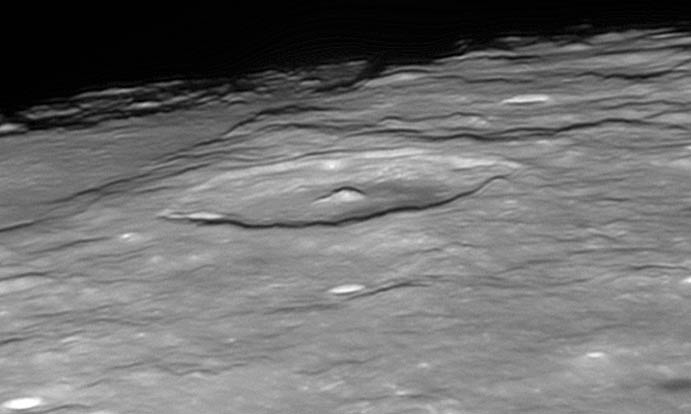Difference between revisions of "May 21, 2005"
| Line 1: | Line 1: | ||
__NOTOC__ | __NOTOC__ | ||
=Two in a Row= | =Two in a Row= | ||
| + | <!-- Start of content --> | ||
<table width="85%" border="0" align="center" cellpadding="6" cellspacing="2"> | <table width="85%" border="0" align="center" cellpadding="6" cellspacing="2"> | ||
<tr> | <tr> | ||
| Line 54: | Line 55: | ||
</table> | </table> | ||
<p> </p> | <p> </p> | ||
| + | <!-- End of content --> | ||
{{wiki/ArticleFooter}} | {{wiki/ArticleFooter}} | ||
Revision as of 18:37, 7 February 2015
Two in a Row
Image Credit: Damian Peach |
|
Two in a Row LPOD has never before published two images in a row from the same photographer - until now. Damian has returned from a very successful vacation/imaging session in the Caribbean and he is slowly processing and releasing a series of excellent images including some like todays and yesterdays of rarely seen limb craters. I am excited and want to quickly share this new information so here is the second in a row! Schluter is a relatively fresh crater near the Cordillera rim (arcing across the upper left) of the Orientale Basin. I have observed Schluter at the telescope in that I have recognized its highly foreshortened shape when looking at Orientale. But I have never seen inside the crater as clearly as shown here. Schluter is 89 km in diameter, only slightly smaller than Copernicus (93 km) and has a similar complex crater structure with terraced walls, central peak and flat floor. The northern portion of the floor contains an arc of dark mare material just visible here (see The Clementine Atlas plate 73 for confirmation). The mare lavas are probably associated with the short, narrow rilles seen on the Lunar Orbiter 4 image. The rilles and lava make Schluter a floor-fractured crater. Something else invisible on this image is that Schluter is a dark halo crater, but in radar wavelengths (3 cm), not visible light. Radar darkness means a smooth surface at 3 cm scale (so there arent many pebbles), but optically the exterior of Schluter doesnt look any different from other nearby areas. All are smoothed at a much larger scale by the thick ejecta deposits from Orientale. The deposits are so thick that you probably didnt notice the 80 km wide crater Hartwig immediately in front of Schluter. Hartwig (find it from the small bright crater inside it) was also once a Copernicus-like crater, but massive ground-hugging flows of Orientale ejecta destroyed its southern rim and deposited a 1-2 km thick layer of debris on its floor. R.I.P. Technical Details: Related Links: Yesterday's LPOD: Rarely Seen Genius Tomorrow's LPOD: Domeland |
|
Author & Editor: Technical Consultant: Contact Translator: A service of: |
COMMENTS?
Register, Log in, and join in the comments.




